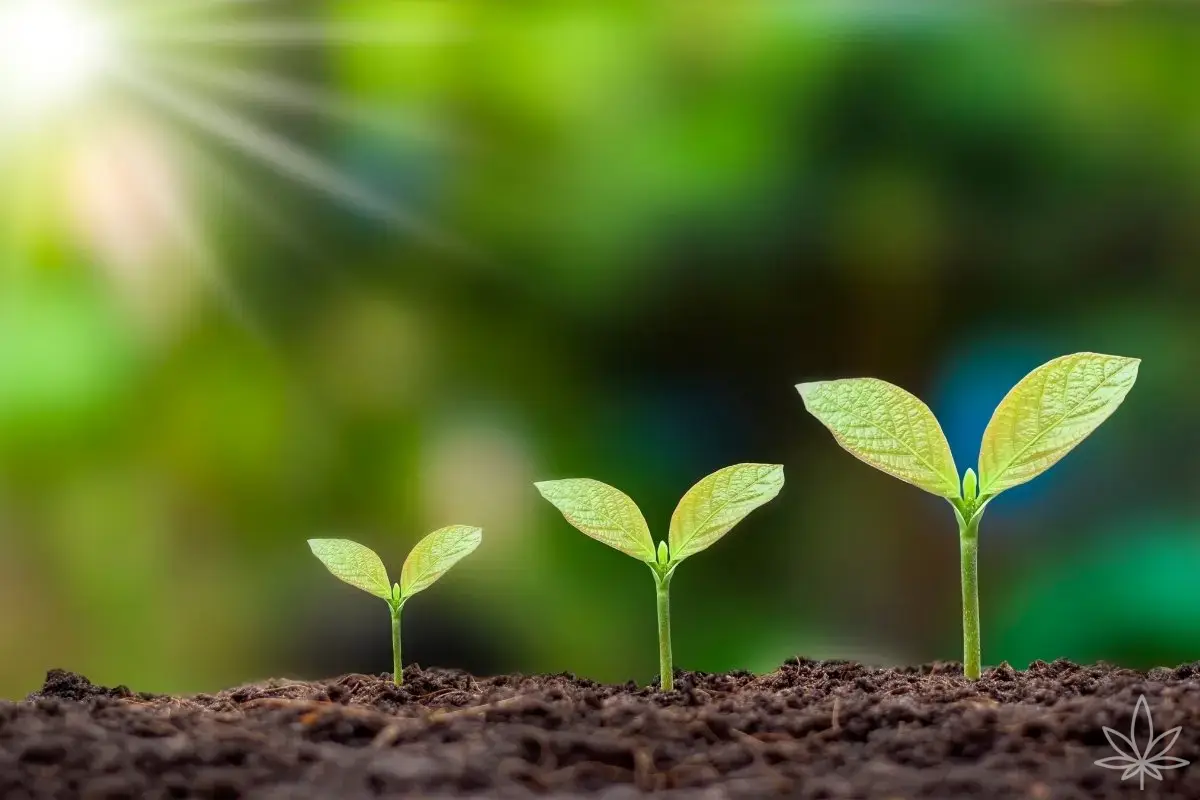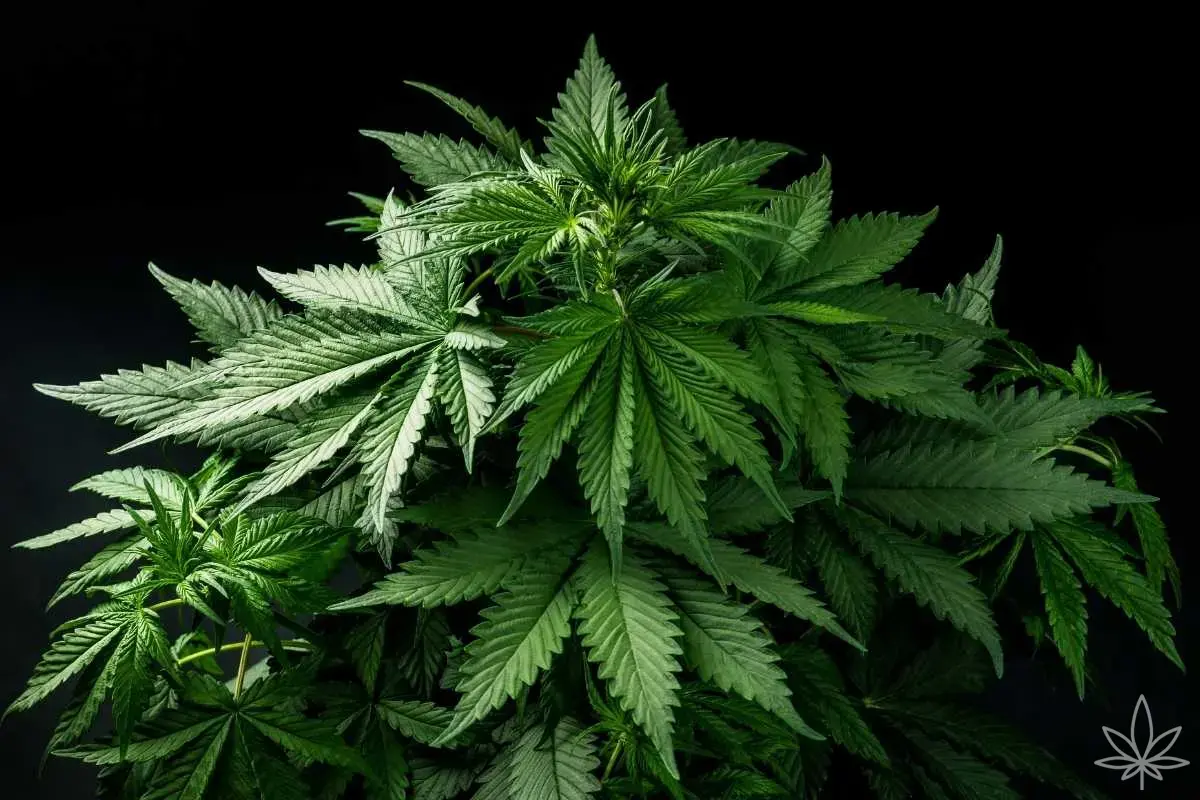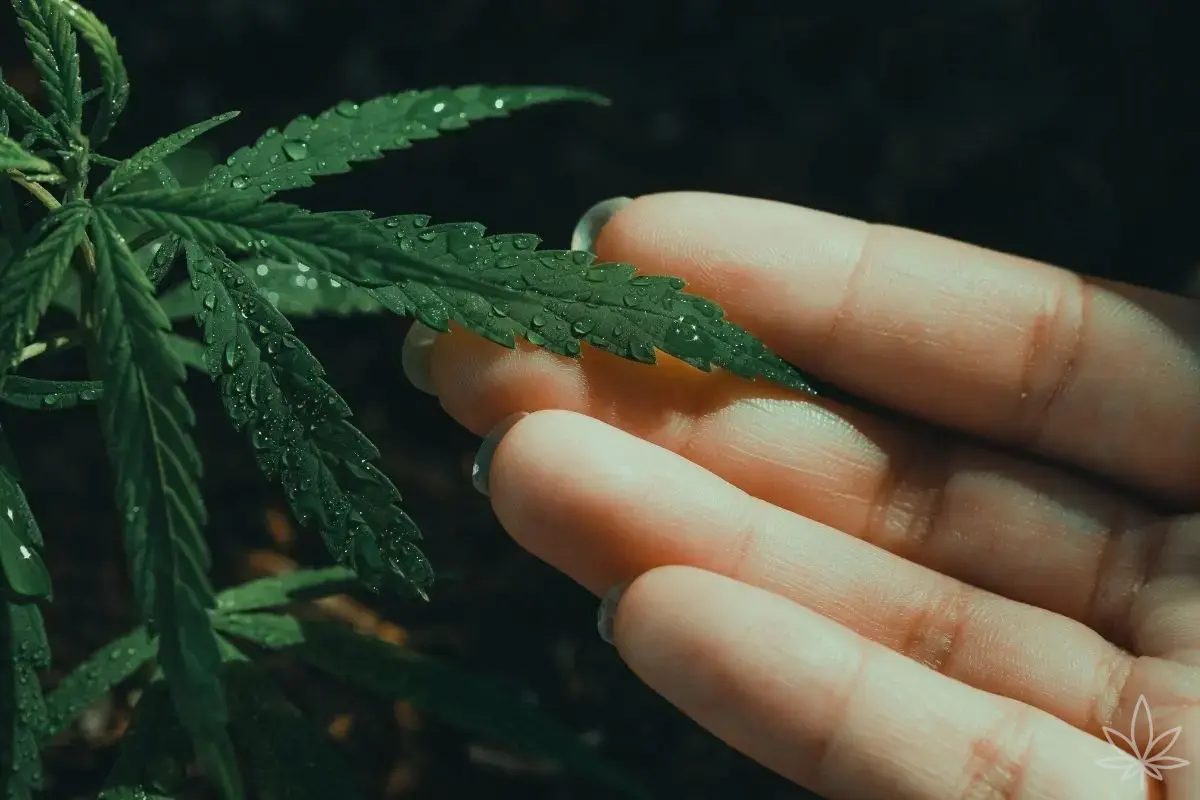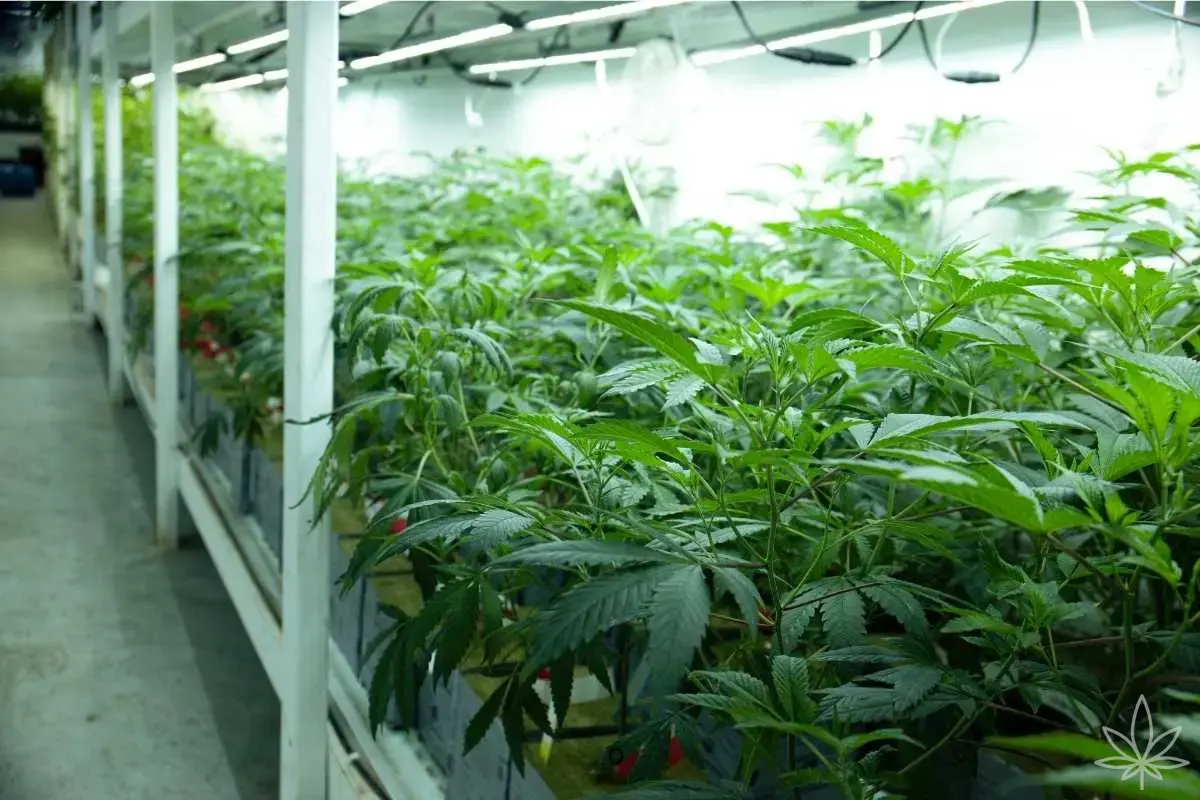Soil partly feeds on its own — especially a fresh cannabis mix. That’s why the key isn’t “how much bottle to pour,” but when to add anything at all. A good plan is simple: a watering rhythm, the right pH, and very cautious increases in dose.
Seedling & week one: less is more
In fresh, lightly fertilized soil, a young cannabis plant needs nothing but plain water at pH 6.3–6.6. Water in small portions in a ring around the stem so the rest of the pot stays only moist. If the pot is large, stick to the ring method so you don’t turn it into a swamp.
Weeks 2–3: the first appetizer
When the plant has 3–4 pairs of leaves and has clearly “taken off,” it’s time for half-strength grow nutrients — once every three waterings. For example: water → water → water with half dose. If the color is deep and the leaf tips are clean, don’t rush.
Weeks 4–6 (vegetative): build mass, don’t salt the soil
By now the plant is a small bush. Watering rhythm is usually every 2–3 days, each time slowly to a light runoff. Feeding: still every third watering, at most ¾ of the label dose if you see it’s eating with gusto. If the leaves turn very dark green, go back to half strength. Keep pH stable — that does more than piling on new “miracles.”
Transition to flowering: no shock
When you flip the photoperiod, don’t jump straight to a full “bloom” dose. Start at half, watch the sites and new growth, and raise to ¾ only if the plant asks for it. Soil stores what you give — better a little less and more often than “one big hit” and a week of undoing.
Flowering (weeks 1–6): a clean rhythm
The simplest pattern works best: water → water → water with bloom nutrients. If you run strong lights and big bushes, the rhythm may shift to water → feed → water — but read the leaves. Browning tips mean you’ve reached “enough.” Don’t mix five additives at once; in soil, less really is more.
The finish (last 1–2 weeks): a soft landing
At the end many growers lower doses or even switch to plain water. It’s not a dogma, but if the soil has been fed generously, lighter watering lets the plant finish calmly. Keep watching pH and water temperature — an ice-cold shower at the end is a straight path to stress.
How much water “per pot” — and how not to overdo it
In veg, a 10 L pot usually drinks 1.2–1.6 L for a full watering; in flower 1.3–1.8 L. The most important thing is to water slowly, in circles with pauses, until a little water appears in the saucer. Leave it for a few minutes, pour off the excess, let the soil breathe. The pot’s weight will be your metronome — when it’s clearly lighter, that’s the cue for the next “beat.”
Mistakes that slow your yield
The three I see most often: overwatering out of care, chasing doses “because it’s flowering,” and no pH management. If you learn to keep the every 2–3 days rhythm, hold 6.3–6.8, and not chase “miracles” at every spot on a leaf, you’ll reach harvest faster, with thicker stems and healthier color.







